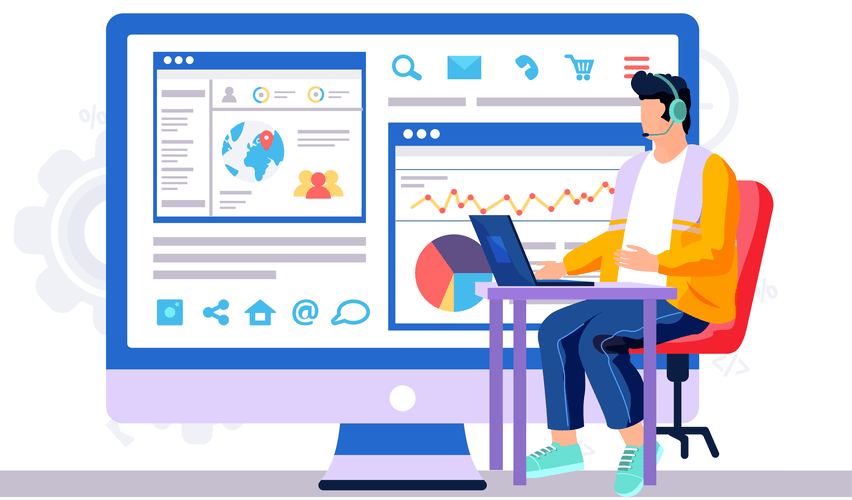Combined, they are disrupting the automotive value chain and affecting all its stakeholders. At this rate, the software and E/E market is expected to outpace growth vastly in the overall automotive market, which is estimated to grow at a compound rate of 3 percent in the same time frame. Software and electronics have therefore become the focus of most automotive companies and their executives. For example, we expect strong annual growth of up to 30 percent for Level 2 advanced driver assistance systems through 2025, largely driven by regulations that require new vehicles to have these sensors.
To achieve the proper granularity for each model, we distinguish the key automotive domains , as well as characteristics such as vehicle segment, OEM type, or SAE autonomous-vehicle level. Many automotive companies leverage the basic code for their software stacks, including those for operating systems and key middleware, from other industries. In doing so, they significantly reduce their development timelines and costs, since creating original code is much more difficult. For infotainment, the leading options for upcoming vehicles stem from the smartphone industry, with automotive variants of mobile operating systems becoming common. For ADAS, companies originally borrowed early software from aerospace applications and manufacturing automation; today, real-time operating systems from semiconductor players and embedded-software companies have become popular.
‘What’: Product architecture and make or buy
All captured information is time-stamped, and a custom log viewer allows users to view perfectly time-aligned audio signals with I2C commands and trigger instances. The Siemens VCO1S A²B Bus Monitor automotive software development acts as a spy node in a daisy-chained A²B-based network to non-intrusively monitor and capture data from the bus. All forms of traffic, audio and control can be logged live over USB and Ethernet.

Development would go through discrete phases, with each phase being completed before the next began. Many of the development processes were manual, as were handoffs from one part of the toolchain to the next. It would take six to eight months for a new version of the software to emerge in that approach. Deloitte’s global automotive team helps automotive companies execute innovative ideas in exceptional ways. We offer a global, integrated approach combined with business and industry knowledge to help our clients excel anywhere in the world. Our experts work with companies across the entire automotive value chain – OEMs, suppliers, dealerships, logistics, and captive finance providers – to address the full range of challenges the industry must confront.
Industry 4.0
Feed reporting data into visual dashboards to support KPI monitoring and decision-making. Automate the delivery of custom reports to gain real-time insights into your development processes. In the meantime, Codebeamer’s automatically recorded audit trail provides a single source of truth, significantly reducing compliance audit time and costs. Through custom software for connected cars, Fortech helps build the next generation of vehicles. The automotive industry is changing as manufacturers equip cars with software and connected technologies that make the vehicles safer and more efficient.

As software complexity increases, automotive players must upgrade their performance-management systems using standardized, data-driven metrics for productivity, project maturity, and quality. Only automated, data-driven insights can enable a real-time, fact-based performance-management approach and proactively reveal looming software issues concerning time, cost, and quality. The first dimension—what software is developed—focuses on reducing complexity through modular and decoupled hardware/software architecture, https://www.globalcloudteam.com/ user-centered design, and requirements management. The other three dimensions focus on increasing the efficiency of software development by providing the right structures, processes, and infrastructure. We have identified 11 best practices across the four dimensions that can help automotive players successfully master their software challenges . Autonomous driving, connected vehicles, the electrification of the powertrain, and shared mobility are mutually reinforcing developments in the automotive sector.
Challenge 1. When HMIs and connected applications collide
Automotive players should view this type of software-development toolchain as the backbone for a highly productive organization that supports continuous integration and the use of standard APIs. Such toolchains also ensure efficient and automated interfaces between software and hardware development tools throughout the full development process. They also create an opportunity to automate several process steps for activities such as test runs. Overall, the goal is to accelerate development speed and enable early testing.

Other factors, such as cost, are also important but typically not decisive. To improve decision making, OEMs can weigh each factor based on their priorities and the market context. While automotive organizations must excel on many levels to win the software game, attracting and retaining top talent is probably the most crucial dimension. Based on information from McKinsey’s proprietary SoftCoster database, which includes more than 14,000 software-development projects across industries.
Advancing Automotive AI & Software Development with Infineon
OEMs need to incorporate new features closer to the start of production, and they also need the ability to quickly and safely push out software upgrades after vehicles have been produced. Ondrej Burkacky, Johannes Deichmann, and Jan Paul Stein, “Mapping the automotive software-and-electronics landscape through 2030,” McKinsey, July 9, 2019. In the area of vehicle virtualization, Synopsys provides itsVirtualizer™Development Kits for the AURIX™ microcontroller family. Using the VDKs, Infineon’s customers can develop software and perform regression testing and fault injection up to 18 months before silicon becomes available. Infineon has also used the VDK internally to accelerate qualification of its AURIX™ TC4x virtual prototype model.
- This approach provides unprecedented levels of speed, scalability, quality and security.
- Advanced driver assistance systems — or ADAS — help improve the safety of the driver and everyone else in their vehicle.
- Software modules such as these are impressive in their own right and have enabled some of the most important automotive advances over the past ten years.
- In the third archetype, the organizational structure focuses on technologies and domains, such as the network, the human–machine interface, or the back end.
Philipp Wolf is a manager in Deloitte’s automotive consulting practice in Germany, focusing on strategy and product development. He specialises in autonomous driving and artificial intelligence and its impact on the overall automotive industry transformation. Establishing standardised platforms leads to gradually replacing classic components that feature function-specific, embedded, monolithic software. Instead, more separated hardware and software development modes are ideal – ones that are clearly defined by standard interfaces allowing for easy integration, similar to a plug-and-play approach.
Leading tech players make strong acquisitions in the automotive space
The automotive industry works within a common software framework that brings standardization to automotive software development and architecture design. Avenga specializes in developing custom software solutions in accordance with AUTomotive Open System ARchitecture to ensure business stability, predictability, and scalability for today and the future. We help the automotive industry players create reliable Advanced Driver Assistance Systems software that performs in accordance with functional safety standards. Specializing in perception software, Avenga delivers autonomous driving solutions that let vehicles navigate seamlessly in real time and that are powered by the unified force of AI, ML, and Computer Vision.

Technical or implementation requirements, such as the memory needed for a certain feature, should be in a separate level . This approach ensures that OEMs will focus on value creation and set the right priorities during software development. As companies divide requirements into levels, the following activities can help.
A. What software is developed: Architecture, design, and requirements
“Here as well, help can come from suppliers that understand the vehicle as a whole, and not just its individual domains,” adds Hartung. Embedded software is becoming mainstream in the automotive industry and it helps automakers deliver differentiated experiences to their clients. Avenga’s automotive development services include creating advanced embedded systems that enable car manufacturers to gain better insights into drivers’ behavior and to switch to predictive maintenance. Leveraging the connected infrastructure, Avenga helps companies build immaculate in-vehicle user experiences.